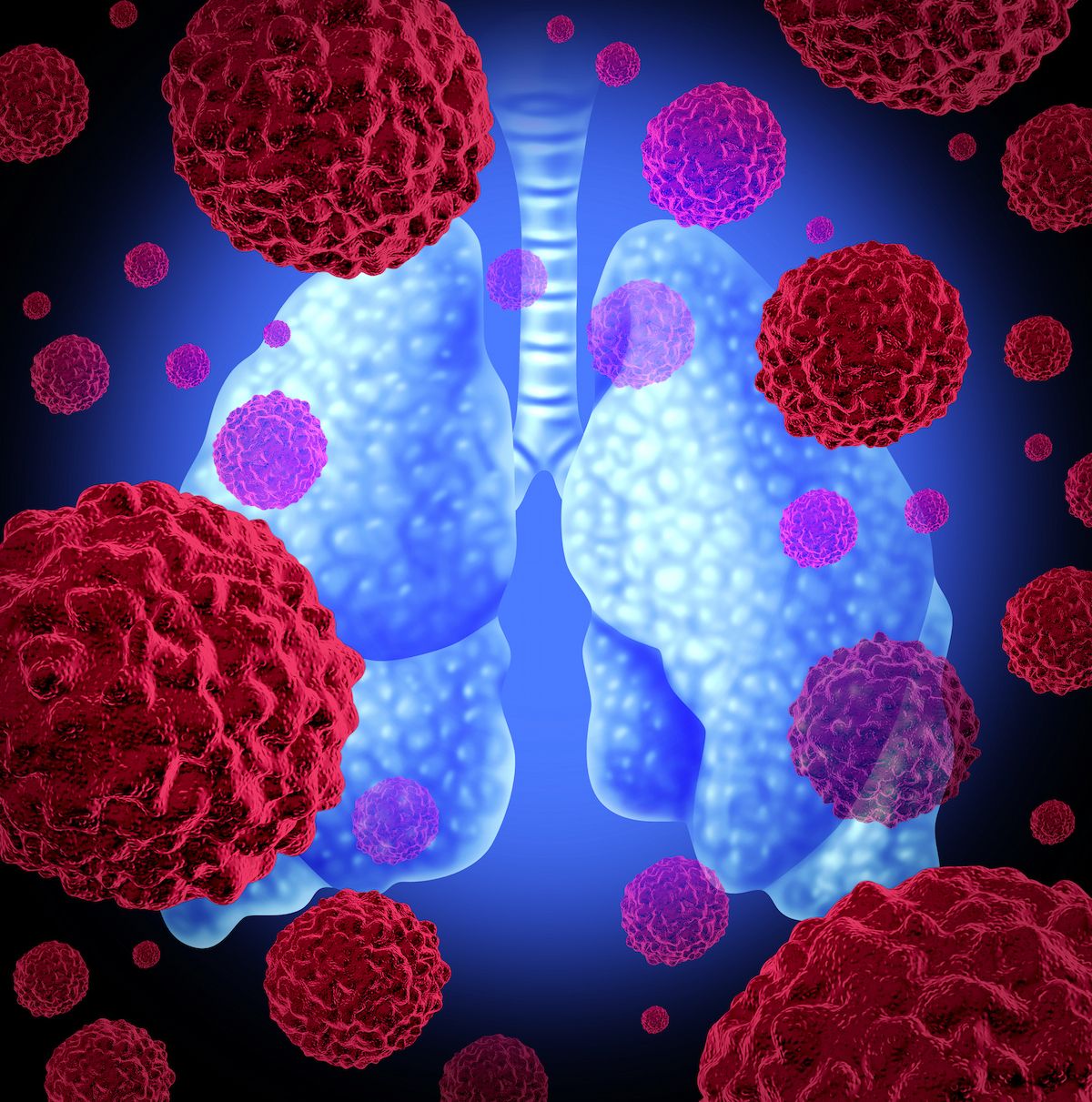ZL-1310 Shows Promising Activity in Pretreated R/R ES-SCLC
Data from a phase 1 trial showed an ORR of 68% and a DCR of 93% with ZL-1310 in those with extensive-stage small cell lung cancer during dose escalation.
Data from a phase 1 trial showed an ORR of 68% and a DCR of 93% with ZL-1310 in those with extensive-stage small cell lung cancer during dose escalation.

The DLL3-targeted antibody-drug conjugate zocilurtatug pelitecan (ZL-1310) demonstrated encouraging antitumor activity and low rates of drug withdrawal and high-grade adverse events (AEs) in patients with relapsed or refractory extensive-stage small cell lung cancer (ES-SCLC), according to updated results from an ongoing phase 1 trial (NCT06179069). These results were shared at the 2025 American Society of Clinical Oncology Annual Meeting.
Across all patients in the dose-escalation phase (n = 28), the overall response rate (ORR) was 68%, with a disease control rate (DCR) of 93%. Complete responses (CRs) were observed in 4%, partial responses (PRs) in 64%, stable disease (SD) in 25%, and progressive disease (PD) in 7%.
In patients who received 0.8 mg/kg of ZL-1310 (n = 4), the ORR and DCR were both 75%, with PRs in 75% and PD in 25%; in those who received 1.6 mg/kg (n = 8), the ORR and DCR were 63% and 100%, respectively, with PRs in 63% and SD in 38%; in those who received 2.0 mg/kg (n = 6), the ORR and DCR were 67% and 100%, with PRs in 67% and SD in 33%; in those who received 2.4 mg/kg (n = 7), the ORR and DCR were 57% and 86%, with CRs in 14%, PRs in 43%, SD in 29%, and PD in 14%; and in those who received 2.8 mg/kg (n = 3), the ORR and DCR were both 100%, with PRs in 100%.
In patients across all lines of therapy (n = 74), the ORR was 37% and the DCR was 93%, with confirmed CRs and unconfirmed CRs in 1% and 1%, confirmed and unconfirmed PRs in 35% and 14%, SD in 42%, and PD in 7%.
For those in the second line of therapy (n = 33), the ORR was 49%, the unconfirmed ORR was 67%, and the DCR was 97%, with confirmed and unconfirmed CRs in 1% each, confirmed and unconfirmed PRs in 46% and 15%, SD in 30%, and PD in 3%. For those in the third line of therapy (n = 26), the ORR was 27%, the unconfirmed ORR was 42%, and the DCR was 92%, with confirmed and unconfirmed CRs in 0%, confirmed and unconfirmed PRs in 27% and 15%, SD in 50%, and PD in 8%. For those beyond the third line of treatment (n = 15), the ORR was 27%, the unconfirmed ORR was 33%, and the DCR was 87%, with confirmed and unconfirmed CRs in 0%, confirmed and unconfirmed PRs in 27% and 7%, SD in 53%, and PD in 13%.
Of note, in patients with 1 prior line of treatment, those at the 1.6 mg/kg-dose level (n = 14) had an ORR of 57%, an unconfirmed ORR of 79%, and a DCR of 100%, with confirmed and unconfirmed CRs in 0%, confirmed and unconfirmed PRs in 57% and 21%, and SD in 21%.
Additionally, among all patients with brain metastases (n = 22), the ORR was 46% and the unconfirmed ORR was 68%; those without prior radiation (n = 7) had an ORR of 71% and an unconfirmed ORR of 86%; and those with prior radiation (n = 15) had an ORR of 33% and an unconfirmed ORR of 60%.
“Based on phase 1 trial data, a phase 3 pivotal trial assessing ZL-1310 in [patients with] ES-SCLC who have progressed during or after platinum-based therapy is planned to start later this year,” wrote lead study author Manish R. Patel, MD, of Florida Cancer Specialists/Sarah Cannon Research Institute in Sarasota, Florida, in the presentation.
As of the April 1, 2025, data cutoff date, a total of 89 patients were enrolled across the 6 dose cohorts. Eligible patients had metastatic SCLC or ES-SCLC with at least 1 prior platinum-based chemotherapy regimen, and asymptomatic brain metastasis and prior DLL3-targeted therapy were allowed. In the dose-escalation phase, patients were assigned to receive ZL-1310 via intravenous infusion once every 3 weeks at 0.8 mg/kg, 1.2 mg/kg, 1.6 mg/kg, 2.0 mg/kg, 2.4 mg/kg, or 2.8 mg/kg. In the dose-expansion phase, patients received ZL-1310 at 1.2 mg/kg, 1.6 mg/kg, or 2.0 mg/kg.
In part 1a, the trial’s primary end point was safety and the secondary end points included ORR, duration of response (DOR), progression-free survival (PFS), and overall survival (OS). In part 2, the primary end points were treatment-emergent AEs (TEAEs), serious AEs, and ORR and the secondary end points included PFS, OS, DCR, and DOR.
Regarding safety, TEAEs related to ZL-1310 occurred in 73% of all patients, 58% of those receiving less than 2.0 mg/kg, and 92% of those receiving 2.0 mg/kg or more; grade 3 or higher TEAEs related to ZL-1310 occurred in 23%, 6%, and 44%, respectively. TEAEs related to ZL-1310 led to dose reduction in 7%, 4%, and 10%, respectively; drug discontinuation in 6%, 0%, and 13%; and death in 1%, 0%, and 3%.
The most common treatment-related AEs of any grade were anemia (40%), neutropenia (30%), and nausea (26%); of grade 3 or higher, they were neutropenia (14%), anemia (11%), and thrombocytopenia (5%).
Reference
Patel MR, Wu YL, Wang Z, et al. ZL-1310, a DLL3 ADC, in patients with extensive stage small cell lung cancer: ph1 trial update. J Clin Oncol. 2025;43(suppl 16):3041. doi:10.1200/JCO.2025.43.16_suppl.3041